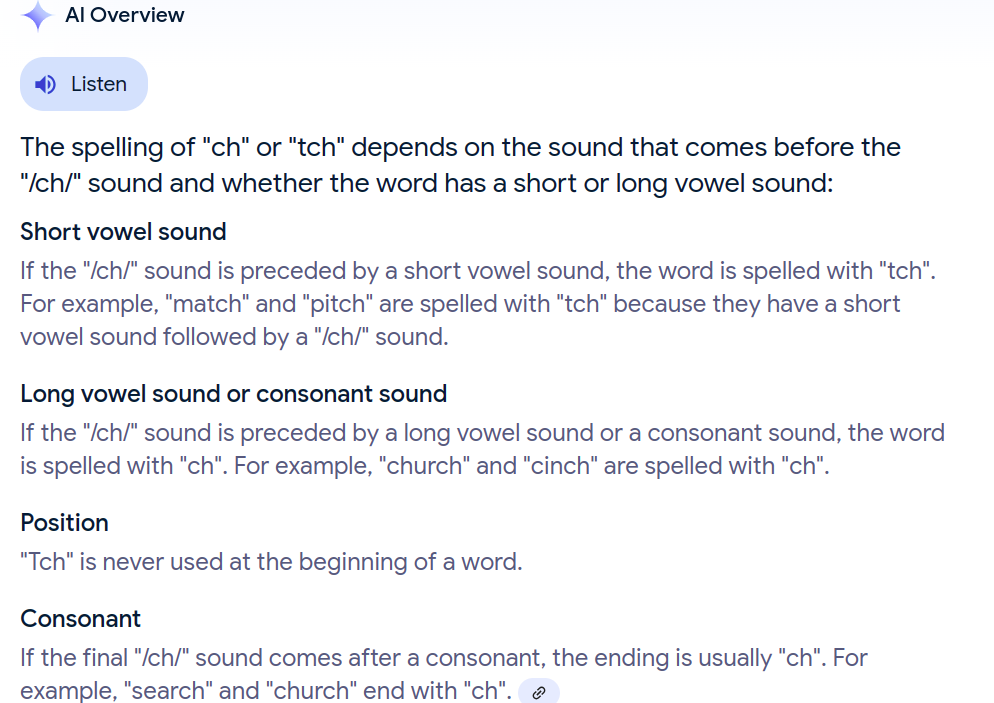#6 Ask Aishwarya: What's the best way to teach <ch> vs. <tch>?
A simple Google search will throw incomplete information at you which will suffice only until it doesn’t. See below the latest from Google’s AI:
This seems fairly straightforward to teach.
Once your students are familiar with this much, you can use the words in the PDF below (possibly as a sorting activity) to help your students learn the pattern.
But what about each, much, which, such, sandwich, spinach, attach, rich and many other words which appear to be exceptions?
This is when the oversimplified phonics rules stop making sense.
Teaching this isolated pattern is less helpful than understanding how consonants behave after single-letter short vowel sounds. The best resource in this regard is Dr. Gina Cooke’s article, Much Ado About Nutching.
Aside from demonstrating how to think about spelling outside of the phonics-induced brain phog, Dr. Cooke also
explains the spellings of words like much and spinach
refines the criteria for the usage of <tch> (yes, there’s more to it than what Google is telling you) and
reveals a critical understanding about short vowels, i.e., reveals how the system works
In my work, I begin to provide access to this understanding right from the start, even to five- and six-year-olds who encounter words like catch for the first time. Instead of being isolated lessons, understanding the system puts all the patterns below into perspective:
flsz or the floss rule
bench but batch
duke but duck
rage but badge
the consonant doubling rule: hoping vs. hopping
My Short Vowels Practice Sets are designed with this systemic understanding at their centre.
On the other side of the paywall, I share with you the slides I use to teach this framework to my students across ages. The slides also demonstrate systematic thinking about orthography.
These resources should suffice for the majority of students. For the more curious teachers and students, I present cross-linguistic findings in the behaviour of consonants after short vowels. Stay tuned!
Keep reading with a 7-day free trial
Subscribe to Breaking Barriers to Literacy and Learning to keep reading this post and get 7 days of free access to the full post archives.


